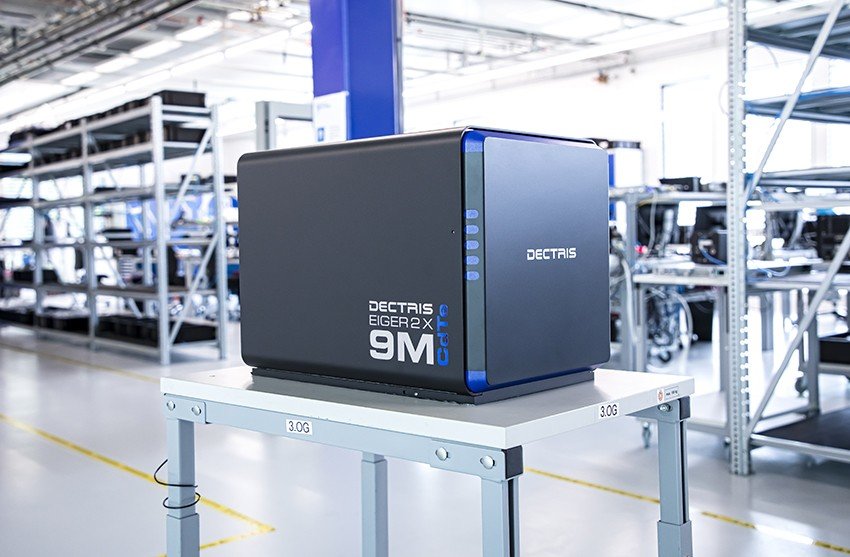electronics-journal.com
27
'21
Written on Modified on
About Cadmium-Telluride Detectors: Behind the Scenes
In the last couple of years, cadmium-telluride (CdTe) detectors have been on the tips of all the tongues here at DECTRIS. With more and more CdTe detectors out in the field, but fewer and fewer opportunities to connect with all of you, our users, we felt inspired to bring high-energy research to your desktops. In a series of webinars, we met many scientists who are working with these cameras. While you may have caught some of the talks, we thought you would want to know how things were for us on the other side of the screen.

“Festina lente [hurry slowly]!”! You can say this about any big project, but when it comes to developing cadmium-telluride (CdTe) detectors and bringing them to your beamlines and laboratories, the saying is even more accurate. No surprise, we were eager to see how you used them in your research. But at first, a little history of how DECTRIS CdTe detectors came to be.
What do CdTe detectors development and crystallography have in common?
As CdTe beautifully absorbs high-energy X-rays, its use as a detector sensor material has been a research topic for a long while now. There was just one tiny problem: similar to its relatives—gallium arsenide (GaAs), cadmium zinc telluride (CdZnTe), and others—CdTe is not easy to crystallize or handle.
Does this sound familiar? Well, detector development has even more in common with crystallography than that! One needs not only to figure out how to get the best CdTe crystals for sensors, but also to spend long days and nights at beamlines characterizing the detector, as well as writing papers and long lines of code.
“Excitement about high-energy X-ray detectors has been building for decades. However, before we started the production of our CdTe detectors, we wanted to make sure that we could deliver a stable camera”, Stefan Brandstetter, the Head of Product Management at DECTRIS, says with a smile.
And so it was: in 2014 we launched the PILATUS3 CdTe product line, and a couple of years later, the EIGER2 CdTe detector family followed. Ever since, we have been reading numerous papers on the use of CdTe detectors for high-energy applications at synchrotron beamlines and in laboratories. We even wrote one or two papers !
The best detector is the detector in use
In 2020, as more and more CdTe detectors were being put into operation while more and more conferences were being canceled due to the unfortunate circumstances of the pandemic, we wanted to learn about what our users were doing with their new cameras. And so, in a series of webinars, we hosted many scientists who shared with us their work on high-energy techniques such as macromolecular crystallography, high-pressure experiments, powder and single-crystal diffraction, X-ray scattering, and XRD-computed tomography.
This is how it was for us:
“Interesting parts of organizing the webinar series? An Internet crash before one of the webinars, and organizing the series around conferences, vacations, beamline shutdowns, and COVID vaccinations”, says Adela Bekic, marketing specialist at DECTRIS.
“Organizing these webinars was like a custom-made conference, where all topics are my favorite topics”, adds Dubravka Sisak Jung, scientific liaison at DECTRIS. “However, I am a bit biased towards webinars by ID22 (ESRF) and GSECARS (APS), because both of these projects started with loaning a CdTe detector for a specific experiment. It is really great to see what a combination of scientific curiosity and good planning can bring”, she concludes.

Your DECTRIS CdTe team includes, but is not limited to (from left to right): Tilman Donath, a person who can make a CdTe detector loan happen; Marcus Müller, the best choice for lab XRD; Adela Bekic, a webinar wizard; Pascal Hofer, your contact in the USA; and Dubravka Sisak Jung, always excited about new experiments.
Finally, we would like to thank all who have contributed to exploring the beauty of high-energy applications in our webinar series. We are particularly grateful to the speakers, who navigated through their research, beamlines, user issues, and lockdowns to make this happen. THANK YOU all!
For those who did not get a chance to see the webinars, the recordings are still available via these links. And if you have any questions, just drop us a message – we are always happy to chat!
Five webinars on CdTe detectors and their applications
Dr. Catherine Dejoie (ID22, ESRF) focuses on high-resolution X-Ray Powder Diffraction and Pair Distribution Functions at the ID22 beamline of the ESRF.
Dr. Jens Meyer (STOE) tackles charge density studies, as well as the experimental need to collect high-quality X-ray diffraction data in the lab.
Dr. Vitali Prakapenka (GSECARS, APS) discusses the challenges and solutions of collecting high-pressure X-ray diffraction data for samples of varying crystallinity.
Dr. Antony Vamvakeros (Finden Ltd.) presents “X-Ray Diffraction Computed Tomography: The Technology and Its Applications in Real-Time Characterization of Functional Materials”.
Dr. Selina Storm presents “Macromolecular Crystallography at High Energies”.
www.dectris.com

